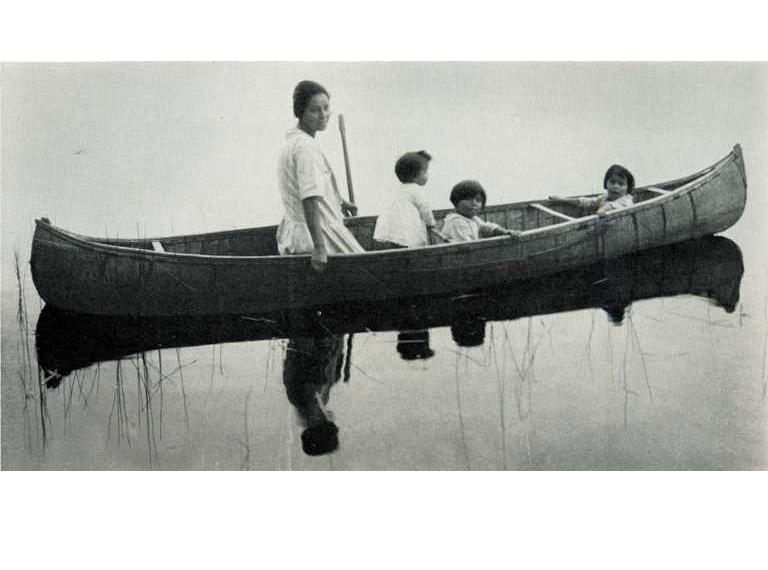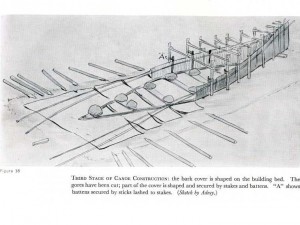One of the most influential inventions to reach the shores of Chicago was the birchbark canoe. The best history is the Smithsonian Institute’s The Bark Canoes and Skin Boats of North America. Unfortunately, as the introduction notes, both archaeological and historic evidence about the use of bark canoes is rare. Bark quickly deteriorates and historical descriptions are vague.
Europeans who first contacted northern Native Americans were impressed with the fast, light birchbark canoes. Among the many types of the world’s canoes, the birchbark canoe was noted for its light weight, efficient shape and ease of carrying overland or portaging.
From the early 1600s to the 1900s, French, English and Dutch fur traders and explorers used native bark canoes to explore and establish trade routes thousands of miles long across the entire northern part of the continent. Chicago’s recorded history began with the visit of Marquette and Joliet in 1673. Both they and the French fur traders they met here had traveled thousands of miles to and from Montreal using birchbark canoes.
Birchbark canoes are made by peeling the bark from a large paper birch. Next stakes outlining the canoe form are driven into the ground. The birchbark is unrolled between them and the canoe is constructed. Wooden ribs and other pieces are added. The bark is cut to the exact shape desired and sewn together with spruce roots. Seams are made watertight with tree pitch.
The result is a craft with an elegant, efficient shape. Birchbark canoes were as light as modern Kevlar canoes. Bark canoes were much less durable, but easily repaired with common forest materials. Long distance travelers would take along a roll of bark, a ball of pitch and some spruce root for sewing.
Although replaced in Chicago and elsewhere by other types of boats, the designs of the original Native American canoes have remained in use to the present day. In the late 1800s factories in Canada and Maine began using wood and canvas respectively to replace the birchbark. After 1950 aluminum and plastic became the preferred materials. It is less clear when the birchbark canoe was first invented.




Add a comment to: Birchbark Canoes: Technology That Changed Chicago